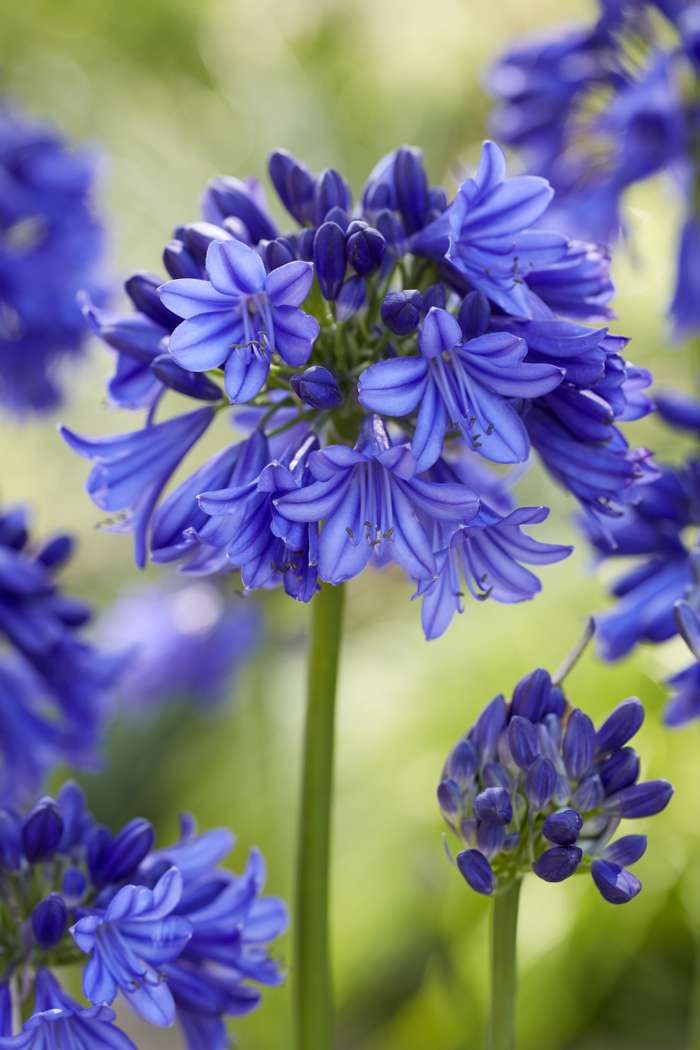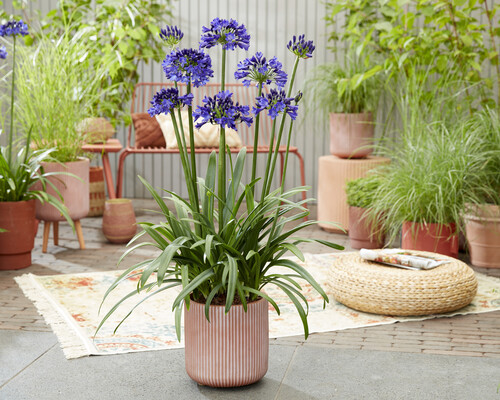Agapanthus Varieties: Picking the most effective for Your Landscape
Agapanthus Varieties: Picking the most effective for Your Landscape
Blog Article
Unleashing the Secret to Effective Agapanthus Cultivation: Idea for a Flourishing Garden
In the world of gardening, growing agapanthus effectively needs a critical strategy that includes different facets of plant care. With cautious attention to detail, one can unlock the secrets to nurturing these spectacular blooms, resulting in a garden that prospers with charm and vibrancy. By comprehending the nuances of agapanthus farming, one can develop a setting where these plants prosper and flower generously. In the complying with discussion, we will discover important tips and techniques that will assist you towards a prospering agapanthus yard, providing understandings into ideal techniques, soil conditions, sprinkling methods, and more.
Growing Agapanthus: Best Practices
When growing Agapanthus, appropriate dirt prep work is vital for making sure successful development and growth of these stunning blossoms. Agapanthus, commonly referred to as Lily of the Nile or African lily, flourishes in well-draining dirt with a slightly acidic to neutral pH degree - Agapanthus. Before growing, it is important to change heavy clay dirts with raw material such as compost or peat moss to boost water drainage and supply necessary nutrients for the plants
To plant Agapanthus, select an area that gets full sunlight to partial color, as this will certainly promote healthy and balanced development and bountiful blooming. Dig an opening two times the diameter of the plant's root round and position the Agapanthus at the very same depth it was previously growing. Gently backfill the hole with dirt, weighing down firmly to eliminate any kind of air pockets around the roots.
Water the recently grown Agapanthus thoroughly and remain to keep the soil uniformly damp, particularly throughout the plant's active growing period. Agapanthus. Using a well balanced plant food once a month can additionally sustain the plant's development and blooming. By adhering to these finest practices for growing Agapanthus, you can develop a stunning screen of these fascinating flowers in your yard
Ideal Dirt Issues for Agapanthus
For ideal development and growing success of Agapanthus plants, making certain the dirt problems are suitable is vital. Agapanthus prospers in well-draining soil with a slightly acidic to neutral pH degree ranging from 6.0 to 7.0. This sort of soil permits adequate water drain, stopping waterlogging which can result in root rot. To enhance dirt drain, take into consideration including raw material such as garden compost or peat moss when preparing the planting site. Furthermore, Agapanthus chooses soil that is rich in nutrients, so incorporating a balanced plant food throughout the expanding season can advertise healthy and balanced development and dynamic blooms.

Watering and Feeding Tips
To ensure healthy development and vibrant blooms, appropriate watering and fertilizing techniques are vital for successful Agapanthus cultivation. Agapanthus plants take advantage of regular watering, especially during the growing season. It is recommended to water deeply once a week, ensuring the soil is moist but not saturated. Throughout warm climate or in pots, even more regular watering may be required to avoid the soil from drying totally.
When it pertains to fertilizing Agapanthus, a well balanced fertilizer with equivalent parts nitrogen, phosphorus, and potassium can be applied in the spring to promote healthy and balanced development and flowering. Slow-release fertilizers are perfect for providing nutrients progressively over a prolonged duration. Prevent over-fertilizing, as this can lead to extreme vegetation development at the expense of blossoms.
Furthermore, incorporating natural matter like garden compost right into the soil can boost nutrient levels and boost dirt structure, aiding in the total health and wellness of the Agapanthus plants. By following these watering and feeding ideas, gardeners can guarantee their Agapanthus plants grow and create spectacular display screens of blossoms.
Trimming and Deadheading Techniques
Proper pruning and deadheading strategies play a vital function in maintaining the health and wellness and visual appeals of Agapanthus plants, complementing the necessary practices of watering and fertilizing for successful growing. Trimming Agapanthus includes eliminating invested flower heads, dead or yellowing fallen leaves, and total shaping of the plant to promote much better development. Deadheading, the process of getting rid of faded flowers, blog here not only enhances the plant's look however also encourages additional growing.
When deadheading Agapanthus, it is suggested to snip off the blossom stem at the base utilizing sharp, tidy shears. This process reroutes the plant's energy from seed manufacturing back into root and vegetation growth, advertising a healthier and a lot more robust plant. Routine deadheading can prolong the growing period of Agapanthus and avoid self-seeding, which can result in congestion.
In regards to pruning, Agapanthus generally benefits from a light trim after blossoming to page clean the plant and motivate fresh development. Cutting down the invested flower stems and eliminating any type of dead or broken foliage assists preserve the plant's vigor and general appearance. Nevertheless, it is important to stay clear of reducing right into the crown of the plant, as this can damage its wellness.

Protecting Agapanthus From Pests and Diseases
Executing efficient insect and disease administration methods is crucial to securing the health and vigor of Agapanthus plants in cultivation. One common pest that influences Agapanthus is the Agapanthus borer, a caterpillar that tunnels right into the plant, causing damage to the fallen leaves and blossoms.
In enhancement to parasites, Agapanthus are susceptible to diseases such as origin rot and fungal fallen leave areas. By remaining attentive and resolving parasite and condition problems immediately, garden enthusiasts can help their Agapanthus flourish and thrive.

Conclusion
To conclude, successful cultivation of agapanthus needs appropriate growing techniques, excellent soil problems, sufficient watering and feeding, regular trimming and deadheading, and protection from illness and parasites. By complying with these pointers and techniques, garden enthusiasts can ensure a growing yard full of attractive agapanthus flowers. Agapanthus. Bear in mind to maintain constant care and attention to information to advertise the health and durability of these magnificent plants
When planting Agapanthus, appropriate dirt preparation is crucial for making sure effective development and development of these lovely blossoms.Water the newly grown Agapanthus thoroughly and continue to maintain the soil evenly moist, specifically during the plant's active growing period.For optimal growth and blooming success of webpage Agapanthus plants, making certain the dirt problems are optimal is vital. When growing or hair transplanting Agapanthus, make certain the dirt is well-prepared to provide the necessary foundation for the plants to establish themselves successfully. One common insect that impacts Agapanthus is the Agapanthus borer, a caterpillar that tunnels right into the plant, triggering damage to the leaves and flowers.
Report this page